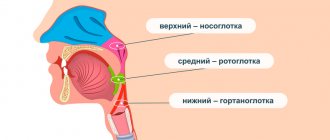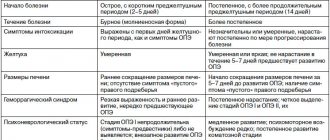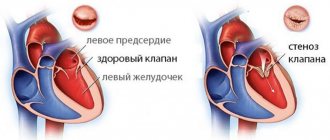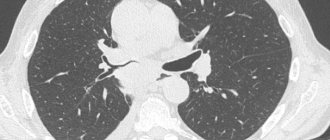Gangrene is the death of human body tissue. It develops when the blood supply to the affected part of the body is cut off due to various factors such as infection, vascular disease or injury. Gangrene can affect any part of the body, but the most commonly affected areas are the extremities (feet, arms, legs, hands).
1.General information
Gas gangrene is one of the most severe forms of infection caused by anaerobic (living only in the absence of air) pathogenic microorganisms. Once upon a time, gangrene, being a rapidly progressing life-threatening condition, was one of the most common causes of death and loss of limbs, for example, in military field medicine, where in pre-antibiotic times the possibility of primary surgical treatment of wounds was very limited, and their infection, on the contrary, was almost guaranteed .
However, even today gas gangrene, with all its inherent threats, is encountered in traumatological, infectious-parasitological, general and vascular surgical practice, continuing to claim the lives of patients.
A must read! Help with treatment and hospitalization!
Gangrene can be treated without amputation at the Innovative Vascular Center
Treatment of gangrene without amputation in Moscow is carried out in a specialized hospital of the Innovative Vascular Center - the Clinic of Innovative Surgery (CIS). In 2011, according to the ROASH report, our clinic took a leading position in performing vascular reconstructions on the arteries of the leg and foot.
The Innovative Vascular Center is a clinic in Russia where modern high-tech methods of restoring blood flow in the legs, advanced technologies of X-ray endovascular surgery, vascular and reconstructive plastic microsurgery are put into use.
Every year we successfully operate on more than 650 patients with critical ischemia and gangrene of the legs. Modern treatment of gangrene can be carried out by a team of experienced vascular and endovascular surgeons, as well as doctors skilled in the management and closure of necrotic wounds. Such a team can achieve impressive results in the treatment of gangrene. This team must include specialists who not only know how to restore blood flow, but who also know how to treat a patient with multiple vascular lesions, severe comorbidities and serious wound complications.
Wet gangrene, necrosis, long-term non-healing wounds, and black color of the finger are not a reason for amputation for our team, but should be the reason for active surgical tactics to save the limb. We manage to save the leg in most patients with threatening limb ischemia. We are fighting to save our leg until the last possible moment.
In many other “limb salvage centers” there is a separation of vascular, endovascular and reconstructive plastic surgery, so there is no possibility of a holistic approach to the treatment of critical limb ischemia.
2. Reasons
Of all the anaerobes that can cause gas gangrene, the most widespread and studied is the genus Clostridia - an opportunistic rod-shaped bacterium that is sown in approximately every fourth healthy person (it lives in the intestines, vagina, and is sometimes found in saliva and on the oral mucosa). Over ten of the most dangerous types of clostridia are known, the abnormally active activity of which leads to the development of gas gangrene in its various forms, and also causes botulism, severe diseases of livestock, etc.
Clostridia can develop, actively reproduce and secrete deadly toxins only in airless environments, i.e. They are obligate anaerobes - oxygen in the air is harmful to them. However, the spores they form are able to survive for quite a long time in the environment, and in the etiopathogenesis of gas gangrene, infection of the wound by soil is of great importance, especially if this soil contains cattle manure.
Dead organic matter serves as a breeding ground for pathogenic bacteria, so anaerobic gangrene can begin in almost any oxygen-free zone of the body, where necrosis develops for one reason or another. There is every reason to call this type of gangrene gas: the vital activity of anaerobic bacteria is accompanied by the intense release of not only toxins, but also gases.
Visit our Dermatology page
Types of gangrene
Depending on which tissues have undergone necrotization, the following types of this pathology are distinguished:
- dry gangrene is the most favorable form, as far as one can generally say about tissue necrosis. With it, the pathological process does not spread beyond the affected area, and the organ involved dries out and decreases in size;
- wet type of the disease - accompanied by putrefactive changes in the affected tissues. The affected area of the body swells and emits a characteristic smell of rotting flesh;
- gas gangrene develops under the influence of clostridia, pathogenic microorganisms that provoke necrotic changes. The most severe form, which rapidly spreads throughout the body, involving healthy tissues in the pathological process. This provokes severe intoxication and, in the absence of timely medical care, can lead to the death of the patient;
- Bedsores are soft tissue necrosis that develops due to constant pressure on the same area of the body. Most often it occurs in bedridden people who are unable to independently change the position of their body.
3. Symptoms and diagnosis
A common property of all types of gas gangrene is rapid spread and progression.
There are four main forms of gas gangrene:
- emphysematous (emphysema - “airing” of tissue), typical gas gangrene, practically without pus, but with widespread necrosis, violent gas formation (with a cadaverous odor) and visible tissue decay, incl. muscles;
- edematous-toxic (as the name implies, swelling and symptoms of general intoxication predominate);
- phlegmonous (diffused necrotic inflammation predominates);
- putrefactive, or putrid (rapid decay of muscle tissue, grayish color, purulent-putrefactive discharge with the release of sharp-smelling gases.
Intoxication is manifested by a significant decrease in blood pressure, tachycardia, altered state of consciousness (pathological excitation or, conversely, depression of the central nervous system), high body temperature (up to 39° and above, which is a prognostically unfavorable sign), impaired renal function, etc. In the absence of qualified and full-scale medical care, death inevitably occurs within the next 1-3 days.
Diagnosis is usually not particularly difficult: the history and dynamics of the condition are studied, the wound is examined, x-rays, blood and urine tests are prescribed (where gas gangrene reveals a complex of changes characteristic of it).
About our clinic Chistye Prudy metro station Medintercom page!
Symptoms of gangrene
Each type and stage of gangrene has different symptoms. Let's look at them separately:
- dry gangrene most often affects the lower extremities and develops in patients of thin build with a gradual deterioration of blood flow in the corresponding part of the body. The skin of the finger or foot turns black, the affected area of the limb dries out and wrinkles. At the same time, sensitivity remains even after tissue necrosis - this is due to the fact that nerve endings are able to perform their functions even after other tissues are destroyed;
- in turn, a sudden cessation of blood supply causes the development of a wet form of gangrene. Its symptoms are tissue swelling and redness. In this case, there is no sharp transition separating damaged tissues from healthy ones. In the affected area of the body, putrefactive processes occur: blisters appear on the skin, oozing first with ichor and then with pus;
- Gas gangrene is characterized by lightning-fast progression. From the moment infectious agents enter the body until characteristic symptoms appear, no more than 48 hours usually pass. Clostridia feed on necrotic tissues, releasing huge amounts of toxins. Symptoms of this form include fever, soreness of the affected area of the body and blackening of the skin on it, as well as swelling of the soft tissues in this area. A characteristic sign of gas gangrene is the release from the wound when pressing not only of liquid, but also of gas bubbles;
- You can read about the symptoms of bedsores in this article.
4.Treatment
Stopping the progression of gas gangrene is possible only by intensive surgical treatment of the wound with excision and removal of dead tissue (including healthy tissue). Powerful antibiotics are prescribed, hyperbaric oxygenation of the wound, drainage is applied, and the wound is left open. If, despite all efforts, the progression of gangrene cannot be stopped, the limb is urgently amputated. It is also necessary to take the most serious aseptic measures to avoid further spread of the pathogen (in particular, infection of medical personnel). Existing anti-gangrenosis serums, in general, do not yet live up to the hopes placed on them and, in addition, such vaccination is fraught with serious complications.
Establishing diagnosis
Gas gangrene is characterized by a necrotizing (flesh-destroying) bacterial infection that can be recognized by a doctor. The doctor will take a tissue sample or perhaps some fluid from the blisters. The sample is tested in the laboratory. However, treatment will not wait for results. The doctor will immediately begin giving you a broad-spectrum antibiotic.
If the infection is severe, sometimes an X-ray or MRI of the soft tissue is used to detect gas deep under the skin. If surgery is required, these scans will indicate exactly where the bacteria are and what needs to be removed.
Which symptoms should be given more importance?
The first signs of gangrene are severe pain, which can be eliminated exclusively with the help of analgesics. In addition, a change in skin color is considered a primary indicator. It is possible to establish the presence of gangrene in the internal organs due to the deterioration of the general condition.
The negative side will be the presence of diabetes mellitus, so patients with such pathology are advised to be more attentive and not turn a blind eye to the first signs. Damage to blood vessels, burns, radiation sickness play a negative role in the spread of gangrene of the arms , legs, and the like.
Why are there problems in Russia with treating gangrene without amputation?
- Vascular surgeons in most clinics in our country are afraid of purulent-necrotic wounds like fire and do not accept patients with necrosis on the foot. After all, they deal with “pure” pathology and are afraid of spreading the infection. As a result, only a few clinics perform vascular surgery for gangrene in Russia. The main problem of vascular and surgical departments is that their doctors have little knowledge of what gangrene of the legs is, symptoms, signs and methods of treatment. Severe pain, symptoms of intoxication, even with the development of dry gangrene of the toe are a contraindication for them to perform vascular surgery. Unlike gas gangrene in diabetes mellitus, in dry gangrene there is no reason to fear the spread of infection, since the pathological process occurs only in a certain segment of the limb.
- Endovascular surgeons deal with the problem of chronic arterial insufficiency by eliminating blockages in blood vessels. However, if angioplasty and stenting fail, the situation usually worsens and an open intervention must be done immediately, but they do not know how to do this. While the patient gets to vascular surgeons, the leg may die. Having restored blood flow through the arteries, endovascular surgeons consider their task completed, because they do not deal with wound processes and send patients to the purulent surgery department, where their leg is easily amputated, despite good blood flow. When you ask the endovascular surgeons of the federal centers what gangrene of the legs is, its symptoms and treatment, they will not answer you, because there are still no quotas for the treatment of critical ischemia, so the federal center is simply not interested in treating such patients.
- General surgeons in departments of purulent surgery have no idea about the level of blood supply to tissues and do not know the methods of reconstructive plastic surgery that allow closing large wound defects. For them, there is no better treatment for gangrene than to do amputation, as high as possible, in order to forget about a difficult patient. They consider even the first signs of gangrene in the initial stage to be a threat to the patient’s life and suggest amputating the leg, fearing possible blood poisoning.
Hybrid surgery in the treatment of dry gangrene without amputation
This is the combined use of bypass surgery and angioplasty to solve the problem of restoring blood flow within a single intervention. Hybrid surgeries are performed in our clinic to achieve optimal clinical results for complex vascular lesions. They expand the possibilities of vascular surgery and allow us to save the leg in the vast majority of patients with gangrene. A shunt works well only when the artery above and below it is well patent. If there are atherosclerotic plaques and narrowings above or below the shunt, then blood stagnates in such a shunt and thrombosis occurs. A shunt to treat gangrene allows you to bypass long-term blockages in the arteries, and then by performing angiography and angioplasty below the shunt, we ensure unimpeded blood flow to the foot and toes. The use of such tactics allowed us to save the leg in 96% of patients with impending ischemia.











